Birds are not just beautiful creatures to admire in cages; they are intelligent, social beings that thrive on interaction and stimulation. Playing with your feathered friend is not only a joyful experience for both of you but also essential for their well-being.
Whether you have a parakeet, cockatiel, or a larger parrot, this blog post will guide you through the art of bird playtime. In the following sections, we will explore the various ways to answer the question ‘How to play with your bird?’.
You’ll learn how to tailor play to your bird’s species, age, and personality, ensuring that each interaction is enjoyable and enriching.
So, get ready to embark on a journey of feathered fun as we delve into the world of avian play and strengthen the bond between you and your feathered companion.
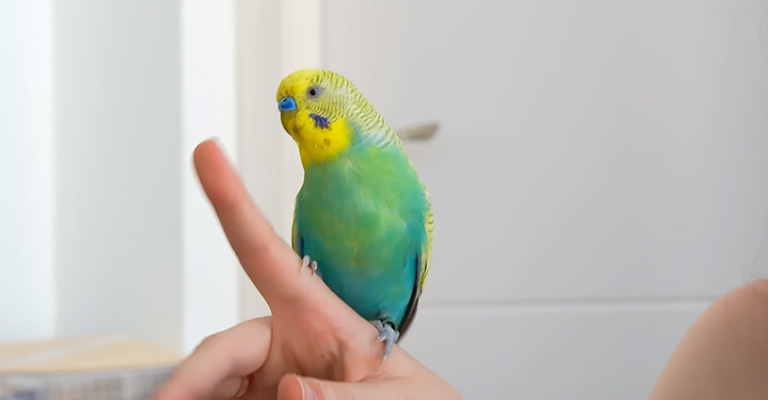
What’s Your Bird’s Playing Needs?
Birds, like any other pets, have specific playing needs that are essential for their physical and mental well-being. These needs vary depending on the species, but there are some general considerations that apply to most pet birds.
Here are seven key points to understand and address when it comes to fulfilling your bird’s playing needs:
Variety of Toys
Birds are intelligent and curious creatures that thrive on mental stimulation. Provide a diverse range of toys made from different materials such as wood, plastic, and metal.
Toys should include puzzles, chew toys, foraging toys, and interactive toys like swings and ladders. Rotating toys regularly can prevent boredom and keep your bird engaged.
Climbing and Perching Opportunities
Birds love to climb and perch. Offer various perches of different diameters and textures to promote foot health and exercise. Natural branches or wooden dowels are excellent choices. Some birds enjoy rope perches that provide a different texture and help with foot and leg strength.
Foraging and Puzzle Toys
Encourage your bird’s natural foraging instincts by providing toys that hide treats or food. These toys make mealtime an interactive and mentally stimulating experience. You can use puzzle feeders or create DIY foraging toys using safe materials.
Social Interaction
Birds are social animals and require regular social interaction with their owners. Spend time playing with your bird outside of the cage, offering gentle head scratches, and engaging in interactive games. This not only provides mental stimulation but also strengthens the bond between you and your feathered friend.
Flying and Exercise
Birds need space to stretch their wings and fly. Allow your bird out-of-cage time daily in a safe and supervised environment. Ensure that the room is bird-proofed to prevent accidents, and never leave your bird unattended outside the cage.
Mental Challenges
Birds are highly intelligent, and mental stimulation is crucial for their well-being. Teach your bird new tricks or commands, introduce them to new sounds or music, and provide opportunities for problem-solving. Training sessions can be a fun way to engage their minds.
Rotation and Enrichment
Keep your bird’s environment dynamic by rotating toys, perches, and cage accessories regularly. This prevents boredom and keeps your bird mentally and physically active. Consider introducing new items periodically to pique their interest.
Remember that each bird has its own personality and preferences, so it’s essential to observe your bird’s behavior and adapt its playtime activities accordingly.
Additionally, always prioritize safety by ensuring that toys and play areas are free of hazards, such as toxic materials, sharp edges, or small parts that could be swallowed.
Meeting your bird’s playing needs not only promotes their physical and mental health but also fosters a happy and contented pet that will thrive in your care.
Preparing a Safe Play Environment for Your Bird
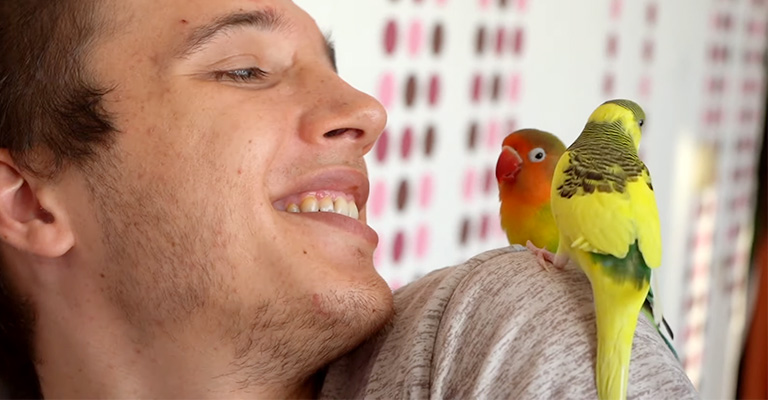
Creating a safe play environment for your bird is crucial to ensure its well-being and enjoyment. Here are essential steps to prepare a secure play area:
Bird-Proofing
This step involves a thorough inspection of the play area to identify and remove any potential hazards. Toxic plants, chemicals, sharp objects, and small items that your bird could ingest should be eliminated.
Even seemingly harmless items like loose threads or small plastic pieces should be removed, as birds are curious and may try to chew on them, leading to ingestion and health problems.
Escape Prevention
Preventing your bird from escaping is crucial to avoid accidents and ensure your bird’s safety. This includes keeping doors and windows closed, using window screens, and sealing any gaps or openings that could allow your bird to fly out. Remember that birds are agile and can fit through surprisingly small openings.
Supervision
Always be present and attentive when your bird is in the play area. Birds are quick and can get into trouble fast. Your presence allows you to intervene if your bird encounters any dangers or exhibits unusual behavior.
Safe Flooring
Opt for non-toxic, easy-to-clean flooring like linoleum or play mats. This choice not only helps keep the play area clean but also prevents your birds from coming into contact with harmful substances if they accidentally ingest something or spill food.
Eliminate Predators
Keep other pets, such as cats and dogs, away from the play area. Birds are naturally prey animals, and the presence of potential predators can cause stress and anxiety, making it essential to maintain a stress-free environment for your bird’s playtime.
Safe Toys
Provide your bird with toys specifically designed for birds. Ensure these toys do not have small, swallowable parts or toxic materials. Regularly inspect and clean the toys to prevent any wear and tear that could create hazards.
Noisy Areas
Birds are sensitive to noise, so select a quiet location for the play area within your home. Avoid placing it near loud appliances, televisions, or areas with high foot traffic to prevent stress and ensure a comfortable playtime experience.
Electrical Cords
Conceal or protect electrical cords within the play area to prevent your bird from chewing on them. Birds love to chew, and chewing on cords can result in electric shocks or injuries. Use cord covers or cord organizers to secure them out of reach.
Secure Perches
Stable perches and platforms are essential for your bird’s safety. Unstable perches can lead to falls or injuries. Regularly check the condition of perches and ensure they are securely fastened.
Fresh Water and Food
Offer fresh water and a small amount of food during playtime to keep your bird hydrated and nourished. Birds can become dehydrated quickly, so providing access to water is vital.
Remove Hazards
Conduct routine inspections of the play area for any potential dangers. Check toys for loose parts or sharp edges, and promptly address any issues. Regular maintenance ensures a hazard-free environment for your bird.
By following these steps, you can create a safe and enjoyable play environment for your feathered friend.
Choosing the Right Toys for Your Bird
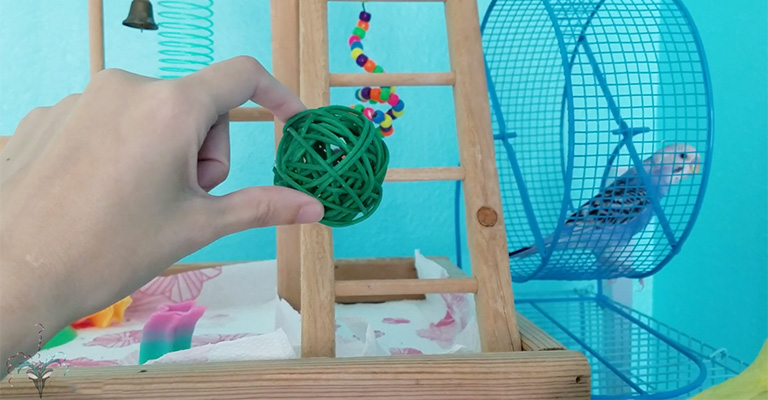
Selecting the right toys for your bird is crucial to keep them mentally and physically stimulated while also ensuring their safety. Here are some tips on how to choose the right toys for your feathered friend:
Consider Your Bird’s Species
Different bird species have varying preferences and requirements when it comes to toys. For example, larger parrots like African Greys or Macaws may require more durable and complex toys, while smaller birds like finches or canaries may enjoy simpler options.
Research your bird’s species to understand their natural behaviors and what types of toys are most suitable.
Texture and Material
Birds love to explore different textures with their beaks and feet. Provide toys made from various materials, including wood, acrylic, metal, leather, and natural fibers like sisal. Ensure that these materials are safe for your bird and free from toxic substances.
Variety is Key
Offer a variety of toys to cater to different aspects of your bird’s play needs. This includes chewing toys, foraging toys, puzzle toys, interactive toys, and toys that encourage physical activity like swings and ladders. Rotating these toys regularly will prevent boredom.
Safety First
Always prioritize safety when choosing toys. Avoid toys with small parts that can be ingested or items that have toxic paints or coatings. Ensure that the toys are appropriately sized for your bird to prevent accidents.
Noise Level
Consider the noise level of the toys. Some birds enjoy toys that make noise, such as bells or rattles, while others may be sensitive to loud sounds. Be mindful of your bird’s comfort with noise when selecting toys.
Colorful and Visually Stimulating
Birds are often attracted to bright colors. Toys with colorful components or those that move and twirl can be particularly appealing to them. However, ensure that the dyes used in the toys are safe and non-toxic.
Foraging Toys
Birds have a natural instinct to forage for food. Incorporate foraging toys into their environment to stimulate their problem-solving skills and encourage mental engagement. These toys can hide treats or pellets for your bird to discover.
Size and Shape
Choose toys that are appropriate in size and shape for your bird’s beak and feet. Smaller birds may prefer smaller toys, while larger birds can handle more substantial items. Toys with different shapes and textures can provide a variety of tactile experiences.
DIY Toys
Consider making some DIY toys for your bird. You can use safe materials like untreated wood, natural fibers, and paper to create simple and cost-effective toys. Just ensure that any materials you use are bird-safe.
Observe Your Bird
Pay attention to your bird’s preferences. Some birds may show a clear preference for certain types of toys or materials. Experiment with different options and observe how your bird interacts with them to determine their favorites.
Regularly inspect toys for signs of wear and tear, and replace them when they become damaged to prevent any potential hazards. Remember that toys play a crucial role in keeping your bird mentally and physically active, so investing time and thought into selecting the right toys is essential for your pet’s well-being.
How to Play With Your Bird?
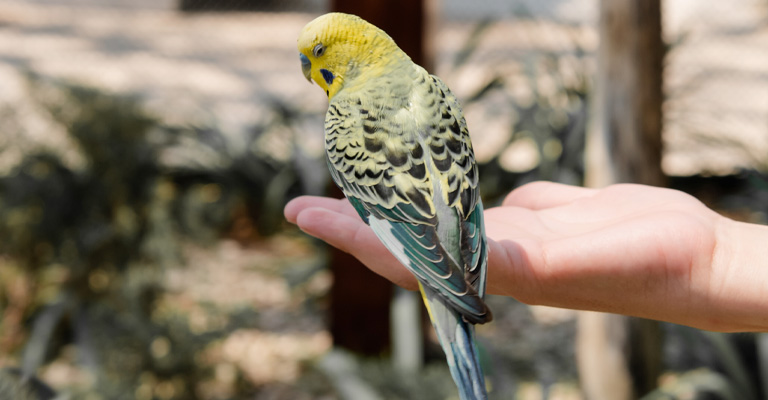
Playing with your bird is not only a fun way to bond with your feathered friend but also an essential part of their mental and physical well-being. Here are eight tips on how to play with your bird:
Choose the Right Time
Birds are often most active during specific times of the day, depending on their species. Be aware of your bird’s natural rhythm and choose a time when they are alert and energetic for play. This will ensure they are more receptive to interaction.
Start Slowly
If your bird is not used to play or is a bit shy, start with short, gentle interactions. Approach the cage calmly and speak softly to avoid startling your bird. Extend your hand slowly and allow your bird to come to you at its own pace.
Interactive Toys
Offer interactive toys that you can both enjoy together. Toys like feather wands, puzzle toys, or toys that make noise (bells or rattles) can engage your bird’s attention and encourage playfulness. Move these toys gently and let your bird interact with them.
Use Your Voice
Birds are social creatures and often enjoy conversational interaction. Talk to your bird in a soothing and reassuring tone. Share stories, sing songs, or simply engage in friendly chatter. Your bird will appreciate the attention and the sound of your voice.
Teach Tricks
Many birds are highly intelligent and can learn tricks with patience and positive reinforcement. Start with simple commands like “step up” or “wave.” Use treats as rewards and always keep training sessions short and positive. Consistency is key to successful training.
Physical Activity
Some birds enjoy physical play. Allow your bird out of the cage in a safe and supervised area for some flying, hopping, or climbing. Use toys like swings or ladders to encourage physical activity. Ensure the room is bird-proofed to prevent accidents.
Gentle Touch
Some birds appreciate gentle touch and head scratches. Slowly extend your hand, allowing your bird to approach and offer its head for petting. Always observe your bird’s body language and respect its boundaries. Not all birds enjoy physical contact, so be sensitive to their preferences.
Rotate Toys and Activities
Just like humans, birds can get bored with the same routine. Rotate toys, introduce new activities, and change up your playtime routine to keep things interesting. Novelty can pique your bird’s curiosity and enthusiasm.
Remember that every bird has its unique personality and preferences. Some birds may be more outgoing and enthusiastic about play, while others might be more reserved.
Always respect your bird’s boundaries and never force interaction. Building trust through patience and positive experiences is essential for a strong bond with your bird.
Lastly, ensure that playtime is a part of your bird’s daily routine. Regular interaction and play contribute to your bird’s mental stimulation, happiness, and overall well-being.
Things to Consider With Playing With Your Bird
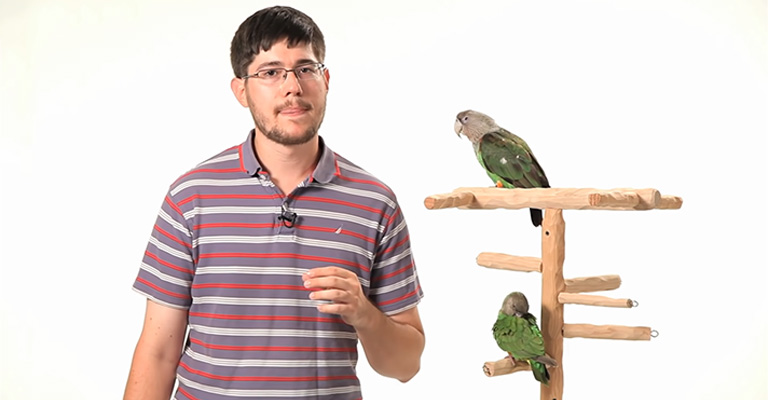
Playing with your bird is not only an enjoyable bonding experience but also essential for their mental and physical health. However, there are several important considerations to ensure that playtime is safe and enriching for both you and your feathered friend.
Here are eight key points to keep in mind when playing with your bird:
Supervision
Always supervise your bird during playtime, especially if they are outside of their cage. Birds are naturally curious, and they can get into trouble quickly. Ensure that the room or play area is bird-proofed to prevent accidents.
Time and Routine
Establish a regular playtime routine with your bird. Consistency helps your bird feel secure and confident. Birds thrive on routines, so try to engage them in play at the same times each day.
Choose the Right Environment
Select a safe and secure environment for play. Remove any potential hazards, such as toxic plants, electrical cords, or open windows. Make sure the room is at a comfortable temperature, and close doors to prevent escapes.
Engaging Toys
Provide a variety of engaging toys for your bird to interact with during play. Rotate toys regularly to maintain their interest. Toys that encourage physical activity, mental stimulation, and foraging are excellent choices.
Social Interaction
Birds are social creatures that enjoy interaction with their human companions. Use playtime as an opportunity to bond with your bird through gentle petting, talking, or singing. Building a strong relationship is crucial for their emotional well-being.
Safety During Flight
If your bird is allowed to fly during playtime, ensure there are no obstacles in their flight path, and close windows and doors. Be cautious of ceiling fans and open flames. Trim your bird’s wings or provide a secure harness if necessary.
Respect Your Bird’s Signals
Pay attention to your bird’s body language and signals during play. Birds communicate through vocalizations, body postures, and eye contact. If your bird appears agitated, scared, or tired, respect their feelings and give them a break or return them to their cage.
Positive Reinforcement
Use positive reinforcement techniques during play to encourage desired behaviors. Reward your bird with treats, praise, or affection when they engage in activities you want to encourage, such as stepping up onto your hand or playing with specific toys.
Cleanliness
Keep play areas and toys clean. Birds can be messy, and their toys can accumulate food debris and droppings. Regularly clean and disinfect toys and play areas to prevent the spread of bacteria or illness.
Remember that every bird is unique, and their preferences for play can vary. Pay attention to your bird’s individual likes and dislikes, and adjust your playtime activities accordingly.
Always prioritize your bird’s safety and well-being, and be patient and gentle when introducing new activities or toys during play. With the right approach, playtime can be a rewarding and enriching experience for both you and your feathered companion.
Benefits of Playing With Your Bird
Playing with your bird is not only enjoyable for both you and your feathered friend but also provides numerous physical, mental, and emotional benefits.
Here are eight significant advantages of spending quality playtime with your bird:
Mental Stimulation
Interaction and play engage your bird’s cognitive abilities. Playing with toys, solving puzzles, and learning tricks stimulate their mental faculties, helping to keep their mind sharp and active.
Emotional Bonding
Playtime is an opportunity to strengthen the bond between you and your bird. Birds are social animals and thrive on companionship. Regular interaction and play sessions help build trust and a deeper emotional connection with your pet.
Physical Exercise
Play encourages physical activity and exercise, which is essential for your bird’s health. Activities like flying, climbing, and exploring their surroundings during play help maintain muscle strength and cardiovascular health.
Stress Reduction
Play is a natural stress reliever for birds. Engaging in enjoyable activities can help reduce anxiety and alleviate boredom, contributing to your bird’s overall well-being.
Prevents Behavioral Issues
Playtime can prevent or mitigate behavioral problems such as feather picking and excessive screaming. Birds that receive adequate mental and physical stimulation are less likely to develop destructive habits.
Socialization
Interacting with your bird through play exposes them to different people and environments. This can help reduce fear or aggression towards strangers and unfamiliar situations, making them more adaptable and social.
Vocalization and Communication
Play often involves vocalization and communication between you and your bird. This interaction helps your bird develop and refine their vocal skills and strengthens the communication bond between you.
Enrichment and Foraging
Many play activities involve toys that promote foraging and problem-solving. This mimics the natural behavior of birds in the wild, keeping them mentally engaged and satisfied. Foraging toys also encourage a healthier approach to mealtime.
Incorporating playtime into your bird’s daily routine is essential, regardless of their size or species. Tailor play activities to your bird’s preferences and abilities. For example, larger parrots may enjoy more physically challenging games, while smaller birds might prefer puzzle toys or exploration in a safe, bird-proofed space.
It’s important to provide a variety of toys and activities to keep playtime engaging and prevent boredom. Always ensure that the play area is safe and free from potential hazards, and supervise your bird during play to prevent accidents.
Ultimately, playing with your bird is not only a source of joy and entertainment but also a means of promoting their physical and mental health, strengthening your bond, and enriching their life in captivity.
FAQs
How can I introduce my bird to playtime if they seem hesitant?
Begin with gentle interactions and offer familiar toys. Let your birds approach playtime at their pace, gradually introducing new toys and activities as they become more comfortable.
What are some suitable toys for my small parakeet to play with?
Small parakeets enjoy bells, swings, and simple toys with mirrors. Providing colorful, safe, and appropriately sized toys will keep them engaged and entertained.
How long should I play with my bird each day?
The ideal duration varies by bird species and their individual preferences. Start with short sessions, around 15-30 minutes, and observe your bird’s response. Adjust the length based on their comfort and interest.
Is it safe to use my hands as toys during playtime?
While using your hands for gentle interaction is fine, avoid using them as toys for larger birds with strong beaks, as this can lead to biting. Use bird-safe toys instead to minimize the risk of injury.
My bird is shy and doesn’t seem interested in play. What can I do?
Be patient and gentle, allowing your bird to observe you playing with their toys. Offer treats and positive reinforcement to encourage interaction. It may take time for a shy bird to feel comfortable with play, so go at their pace and respect their boundaries.
Wrapping Up
Playing with your bird isn’t just about passing the time; it’s a means of providing physical and mental stimulation, fostering a deeper connection, and ensuring your feathered friend’s happiness. As you embark on this journey of avian play, remember that each bird is unique, and their preferences may vary.
Be patient, attentive, and adaptable, allowing your bird to guide the way. By creating a safe and engaging play environment, offering a variety of toys, and respecting their boundaries, you’ll be well on your way to forging a stronger, more joyful bond with your cherished feathered companion.
So, let the games begin, and may your playtimes together be filled with laughter, learning, and love. Hopefully, you have got my point appropriately. Best wishes to you and your birds.